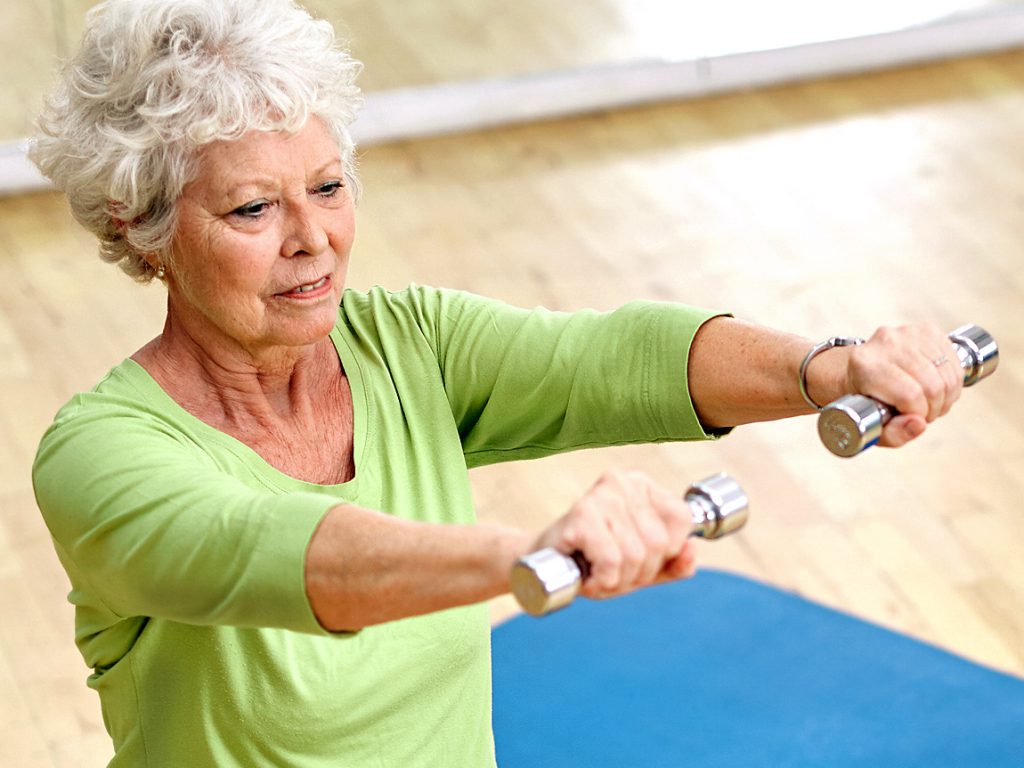How to Prevent Strength Training Injuries (from Someone Who Learned the Hard Way)
With a few simple precautions, you can get the results you want without taking unnecessary risks.

The kid flying around the gym was in fantastic shape, no doubt about it. After lifting, jumping onto a stack of boxes, and running sprints while pushing a weighted sled, he barely looked like he was breathing hard. I’d guess he was 20, one-third my age, and as I watched him, all I could think of was how many parts of my body would explode if I attempted his workout.
It’s a lesson I learned the hard way—several times. All it took was a knee injury from jumping, pulled muscles from sprints, an injured elbow from lifting fast, and worst of all, a back injury from the time I continued lifting heavy weights even though I knew something was off that day.
You can learn from my mistakes, and from the advice of my friend Chad Waterbury, D.P.T., a physical therapist and veteran personal trainer based in Santa Monica, California.
“Any injury is avoidable,” Waterbury says. The trick, as I know all too well, is to understand what not to do before you do it.
Start by checking with your doctor before beginning a new fitness program. Then, follow these tips to ensure that avoidable injuries are actually avoided.
Watch Your Back and Shoulders
These are your two most vulnerable areas, Waterbury says, but for different reasons.
Lower-back injuries often arise from a lack of strength in the muscles of your hips and pelvis. “An older person might do the leg press to strengthen the glutes,” he says. But that movement only develops one function of the muscles: straightening your hips when they’re bent. The glutes also are responsible for pulling your legs away from your torso and outwardly rotating your thigh bone.
The best exercise for those functions, Waterbury says, is the side step with a miniband. Put the band around your thighs, just above your knees, and take long steps to the side. He recommends doing band walks for a minute or two twice per day, making sure to do the same number of steps in each direction.
Shoulder injuries are more likely to be caused by a confluence of two problems: a lack of strength in the rotator cuff muscles combined with a poor range of motion when reaching overhead. The latter forces your arms into an unnatural movement pattern, and the former means the muscles and connective tissues aren’t strong enough to compensate and hold the joint together.
Here’s a simple way to tell if you have enough mobility for overhead exercises: Stand in front of a mirror, and lift your arms overhead, like you’re a referee signaling a touchdown. Can you lift them straight up without bending backward?
Turn sideways, and look again. Your arms should be parallel to your neck, torso, and legs, and from the side they should block your ears. If you achieve this position without pain, you should be able to lift overhead. “If you can’t reach your arms fully overhead, hire a physical therapist or a good trainer to help with your mobility,” Waterbury recommends.
Which brings us to the next set of preventive actions.
The Right Way to Build Strength
Once you restore your range of motion, you need to use it, Waterbury says, preferably with dumbbells. A lot of seniors are intimidated by free weights, but he says there’s really no substitute. “They allow for natural movements of the joints, and they increase the strength of the stabilizing muscles,” including the four that make up the all-important rotator cuff.
Subscribe to our newsletter
It's quick and easy. You could be one of the 13 million people who are eligible.
Already a member? Click to discover our 15,000+ participating locations.
Follow Us
Those are the first steps to injury prevention: Make sure your joints have a full and pain-free range of motion, and choose tools that allow you to use it. Dumbbells, resistance bands, and cable machines are almost always better for your joints than barbells and weight machines that force you to lift along a trajectory that may not be well suited to your body.
The next two steps:
- Start with light weights, and build up to more challenging ones.
- Move slowly, making sure you feel the targeted muscles working and don’t feel discomfort in any area that shouldn’t be involved in the exercise.
The final step is the most counterintuitive.
“Forget about a target number of repetitions for each set,” Waterbury says. “Do as many reps as you can with good form and a stable posture.” Stop the set when you feel your form change or your posture slip—for example, if you lean backward on a shoulder press, or rock forward and back to complete a row or a biceps curl.
“As soon as the quality of a rep diminishes, the risk of injury escalates,” he says.
And if you see someone who’s a fraction of your age and breaks all these rules? Smile, wish him good luck, and try not to imagine what he’s going to feel like 30 years from now. We can guess how it’ll turn out.





